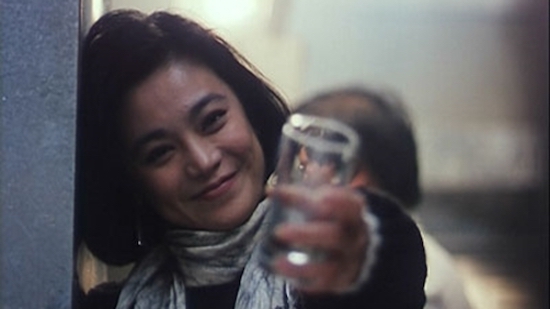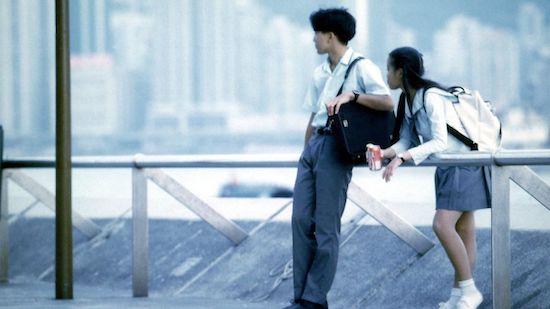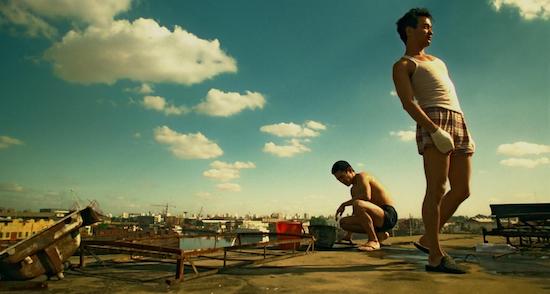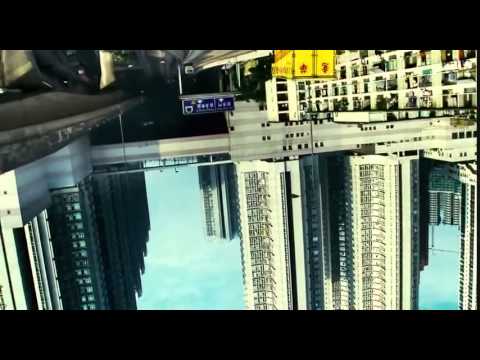Wong Kar-wai’s films are always crossing borders. Though his films have become staples of modern cinema for their lush, hypnotic evocations of Hong Kong, they also spend a surprising amount of time exploring the world beyond the city limits. His characters fly out to Singapore, Cambodia, the Philippines. Some find a new life in America; some decide to come back.
As Wong’s style developed throughout the 90s, these transnational concerns persisted, from the hazy atmospherics of Yuddy’s sojourn in Manila in 1990’s Days of Being Wild, to the more mature style of his 2000 masterpiece In the Mood for Love, whose aching finale is set in the Angkor Wat. With a new 4K restoration of Wong’s films, currently showing at the ICA, coinciding with a renewed global focus on Hong Kong’s politics, this transnational tendency within his work has never felt more apt.
The peak of Wong’s career coincided with the tail-end of Hong Kong’s global economic ascendance, when the city’s GDP grew 6.5% each year. But as Hong Kong filmmaker Tiffany Sia emphasises, “Hong Kong as a global nexus also bears a history of violent exchange”, from the colonial rule of the 20th century to the real estate hegemonies of today. The internationalism of Wong’s Hong Kong is not one of romantic cosmopolitanism, but of cruel necessity, a feeling that the city you grew up in no longer has a place for you, and maybe never did. Wong’s fragmented narratives, unbound from the normal flow of time and space, capture the alienating dislocation of life in a city tossed upside-down by the tides of an increasingly globalised capitalism.
It seems fitting, then, that in Happy Together, Wong’s most explicitly international film, the most indelible image of Hong Kong is quite literally upside-down. Its protagonists, Lai Yiu-Fai and Ho Po-Wing, have travelled to Buenos Aires in an ill-fated attempt to save their relationship. They plan a romantic getaway to the Iguazu Falls, but get lost on the way and end up turning back. They go out to work or play football, but unable to relate to the locals, they mostly hole up in their bedroom, stuck in an endless cycle of bitter fights and fragile, tender reconciliations. When Ho eventually leaves him, Lai, homesick and alone, realises Hong Kong is on the exact opposite end of the world and visualises it through a series of inverted cityscapes. The images are uncanny: Hong Kong appears familiar yet strange, both seen and not seen.
In an interview with Jimmy Ngai, Wong explained that he set Happy Together in Argentina because he “thought by going there, I would be able to stay away from 1997”, the year of the film’s release and, crucially, the year sovereignty of Hong Kong was transferred from Britain to China. Perhaps ironically, though, the film’s focus on migrant experiences mirrors the journeys of hundreds of thousands of Hong Kongers who left the city in the preceding decade, fearing China’s repressive government. As Wong concedes, as soon as you try to consciously avoid something, it is “bound to be hanging in the air, haunting you.”
Wong was not alone in his interest in migration. He, and his peers in Hong Kong’s New Wave and Second Wave, saw their careers blossom against this uneasy historical backdrop. Happy Together was only the latest in a string of films ruminating on the lives of Hong Kong’s emigrants and, however obliquely, on the status of the city itself.
Hong Kong’s migratory history is a lot longer and more complex than just the exodus of the 1990s. It is as much a city of immigrants as emigrants, from the waves of Mainlanders who arrived in the 20th century, to the Filipinos who make up Hong Kong’s largest ethnic minority today. Wong himself was born in Shanghai and only arrived in Hong Kong at age five, unable to speak Cantonese with the locals and turning to cinema partly as a refuge from his lonely childhood.
For many of these new arrivals, Hong Kong is a place of transience. As academic Ackbar Abbas points out in his book Hong Kong: Culture and the Politics of Disappearance, much of its population consisted of “refugees or expatriates who thought of Hong Kong as a temporary stop, no matter how long they stayed.” Peter Chan’s melancholy 1996 romance Comrades: Almost a Love Story, for example, follows two Mainlanders who meet in Hong Kong before eventually reuniting in New York, while in Ann Hui’s 1981 crime drama The Story of Woo Viet, the titular Vietnamese refugee passes through Hong Kong in order to get to the US.
This ephemerality sets Hong Kong’s migration canon apart from many Western immigrant narratives which treat migration as permanent, aspirational – a way of setting down roots. In Hui’s semi-autobiographical 1990 drama Song of the Exile, Cheung Hueyin returns to Hong Kong from London for her sister’s wedding, and is forced to reconcile with her estranged mother. These tropes – an immigrant’s homecoming, an East-West intergenerational conflict – are familiar to us. But Hui shifts focus: Cheung’s immigrant identity crisis is secondary to that of her mother, a Japanese woman whose failure to care for her daughter stemmed partly from her own cultural isolation.
Other films eschew questions of identity and belonging altogether. As films made by Hong Kongers for Hong Kong audiences, there is no implicit expectation that their characters must prove their humanity to an audience who sees them as outsiders. In Happy Together, it feels almost irrelevant that Ho and Lai live at the fringes of mainstream society, because between them they have created their own world; they don’t need to prove that they belong anywhere but with each other. The same kitchen in which Lai’s neighbour harrasses him about Chinese food becomes the site of a swaying, intimate tango. They seek connection with other immigrant coworkers, or in the downtown gay cruising spots of Buenos Aires, finding a brief solace in the city’s queer or racialised margins.
These moments of solidarity crop up throughout Hong Kong’s migrant narratives. Stanley Kwan’s lyrical 1989 drama Full Moon in New York, for example, depicts an unlikely friendship between three women from Hong Kong, Mainland China and Taiwan. Their impromptu meetings, away from men, away from the cold Manhattan streets, become a makeshift support group, each woman supporting the others while white Americans show them only disdain or apathy. These films are largely uninterested in buying into Western ideals like the American dream. Instead, their characters find comfort, not in the promise of assimilation, but in the community that catches them when that promise fails.

These bonds can be fragile, however. Hong Kong’s population has long been plagued by staggering wealth inequality, and its migrants suffer the same problems. While those who left prior to the handover were mostly middle-class professionals, previous waves of emigrants (restaurant workers who came to Britain in the 1960s, for example) were often rural or working-class. The Hong Konger landlord in Full Moon in New York, who begins the film by threatening to cut off a tenant’s heat and water, is a far cry from the titular Illegal Immigrant in Mabel Cheung’s 1985 debut feature, who works a string of low-wage jobs while under constant threat of deportation.
Not all migrants choose to stay abroad. Though Happy Together spends almost its entire runtime outside of Hong Kong, the film ends by following Lai’s journey back home. Indeed, many Hong Kongers who left in the ’90s ultimately returned to the city, reassured by the security of a foreign citizenship. This particular, peculiar transnationalism, of always standing one foot out the door in case things go south, is the persistent contradiction of Hong Kong’s migrant films. It’s why Lai can say, “I feel like going home”, while lamenting that his Taiwanese colleague, unlike him, “has a place he can always return to.”
It is also why dichotomies of East and West, so liberally applied in Western discourse about Hong Kong and its cinema, fail to capture the essence of these films. Ackbar Abbas, who famously described Hong Kong’s culture as one of “disappearance,” cites this as an example of reverse hallucination: “If hallucination is seeing what is not there, then reverse hallucination is not seeing what is there”.
Hong Kong’s migrant films articulate this idea with an eerie wit. Instead of visualising a Hong Kong caught between East and West, they problematise the nature of the visual itself. Happy Together shows us a Hong Kong turned upside-down; Song of the Exile shows us Hong Kong only in sepia-tinted flashbacks. In Clara Law’s 1992 drama Autumn Moon, which follows a schoolgirl preparing to join her family in Canada, Hong Kong appears like a ghost town: high-rise buildings rise up from the streets, but they are strangely empty, a culture of disappearance made frighteningly tangible.

This logic, of seeing the spectacle but not the people it represents, continues to define how Hong Kong is seen on the world stage, exploited as a symbol to advance US imperialism, Chinese authoritarianism or British colonial nostalgia while its people suffer under all three. In 2021, thousands are once again preparing to leave the city as the government’s crackdown worsens, yet younger, ethnic minority and working-class migrants are excluded from the paltry support offered by their receiving countries. Once again, Hong Kong’s dispossessed have only each other to rely on.
What can Hong Kong’s migrant films of the ’80s and ’90s offer us in these times? Perhaps they give us a glimpse of the transnational, solidaristic Hong Konger communities that could be. Perhaps, more than anything, they act as a historical record, an account of the lives of these migrants as they are lived: not on the terms of any government or nation state, but as themselves.
Happy Together is currently available to stream on BFI Player and the ICA’s Cinema 3 throughout February



